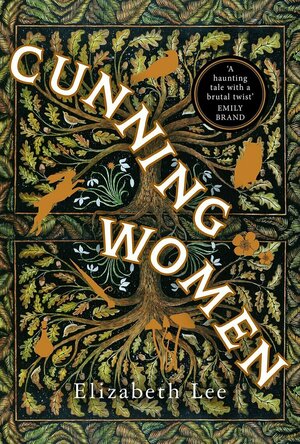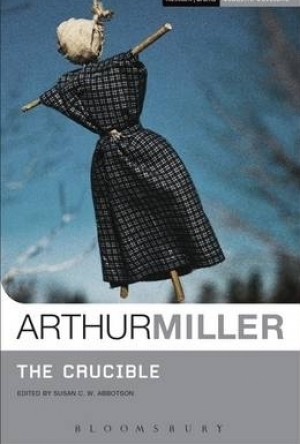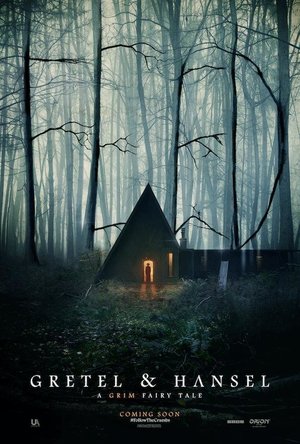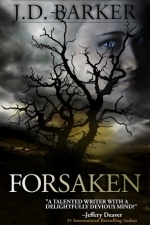Search
Sophia (Bookwyrming Thoughts) (530 KP) rated The Casquette Girls in Books
Jan 23, 2020
What an interesting read! The Casquette Girls is centered shortly after Hurricane Katrina, and of course, New Orleans, where the unexplainable happens.
Part One is a bit slow, with Adele coming back from Paris, reconstruction in the city after the hurricane, and the occasional unexplainable situation happening (aka dead people on the rise, and I don't mean zombies) but Part Two is when things really pick up.
Part Two and a bit of Part Three actually goes back to the past as Adele is reading her ancestor's diary, trying to figure out what happened in the early 1700s after being lead to a completely shut and by completely shut, I mean nailed in attic of the local convent. Of course, she's not lead to the diary until she accidentally "breaks" open a shutter of said convent and unleashes a threat to her entire town.
(I was sort of disappointed when the end of the diary was reached. *sigh*)
What's really neat is said threat is confined within a specific part of the city based on a curse from centuries ago it's usually either vampires or witches. If they are together, chances are there's a pack of werewolves running around or they're with others. Plus, everyone hates vampires by then, not that it isn't the case here.
The Casquette Girls was a neat read based on a hurricane, centering around vampires and witchcraft, although Alys really could have added in a translation of the many French words used (Italian was no problem for me). I wouldn't have felt as though I'm reading fragments by then, and I'm sure the translation guide would help other non-French speaking readers too!
<img border="0" src="http://1.bp.blogspot.com/-mvEgVOM_JGs/U3FfeZceS7I/AAAAAAAADQc/Omh5mPoZ6Gc/s1600/Translation_Please_.jpg"; height="320" width="301">
----------------------
Review copy provided by the author via Xpresso Book Tours
Original Rating: 4.5
This review and more can be found over at <a href="http://bookwyrming-thoughts.blogspot.com/2014/06/review-the-casquette-girls-by-alys-arden.html">Bookwyrming Thoughts</a>
<a href="http://bookwyrming-thoughts.blogspot.com/"><img src="http://4.bp.blogspot.com/-Gi5Rk5yLloA/UtliaUbdL3I/AAAAAAAACbE/J27z92_qrYU/s1600/Official+Banner.png"; /></a>
Part One is a bit slow, with Adele coming back from Paris, reconstruction in the city after the hurricane, and the occasional unexplainable situation happening (aka dead people on the rise, and I don't mean zombies) but Part Two is when things really pick up.
Part Two and a bit of Part Three actually goes back to the past as Adele is reading her ancestor's diary, trying to figure out what happened in the early 1700s after being lead to a completely shut and by completely shut, I mean nailed in attic of the local convent. Of course, she's not lead to the diary until she accidentally "breaks" open a shutter of said convent and unleashes a threat to her entire town.
(I was sort of disappointed when the end of the diary was reached. *sigh*)
What's really neat is said threat is confined within a specific part of the city based on a curse from centuries ago it's usually either vampires or witches. If they are together, chances are there's a pack of werewolves running around or they're with others. Plus, everyone hates vampires by then, not that it isn't the case here.
The Casquette Girls was a neat read based on a hurricane, centering around vampires and witchcraft, although Alys really could have added in a translation of the many French words used (Italian was no problem for me). I wouldn't have felt as though I'm reading fragments by then, and I'm sure the translation guide would help other non-French speaking readers too!
<img border="0" src="http://1.bp.blogspot.com/-mvEgVOM_JGs/U3FfeZceS7I/AAAAAAAADQc/Omh5mPoZ6Gc/s1600/Translation_Please_.jpg"; height="320" width="301">
----------------------
Review copy provided by the author via Xpresso Book Tours
Original Rating: 4.5
This review and more can be found over at <a href="http://bookwyrming-thoughts.blogspot.com/2014/06/review-the-casquette-girls-by-alys-arden.html">Bookwyrming Thoughts</a>
<a href="http://bookwyrming-thoughts.blogspot.com/"><img src="http://4.bp.blogspot.com/-Gi5Rk5yLloA/UtliaUbdL3I/AAAAAAAACbE/J27z92_qrYU/s1600/Official+Banner.png"; /></a>
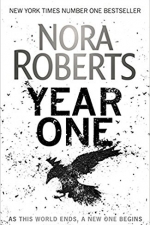
Year One: Chronicles of The One
Book
A stunning new novel from the #1 New York Times bestselling author Nora Roberts―Year One is an...
science fiction fantasy
ClareR (6054 KP) rated Cunning Women in Books
May 15, 2021
Cunning Women is everything I love about historical fiction.
I’m on a bit of a 17th century bender at the moment, and witches seem to crop up frequently. Basically, if you were female, didn’t have a man about the place (preferably one you were married to) and knew things other than washing, cleaning and popping out babies, you risked being accused of witchcraft. Add to that a birthmark, and/ or an opinion or two, AND not going to church regularly, then you might as well start picking your own stake out.
Sarah and her mother, brother and little sister, all live in a hamlet abandoned after all the inhabitants died of plague, known as the Plague Village. They have no money and little income after the death of Sarah’s father, and what money they do have comes from selling potions, small spells and begging. They’re outcasts, and there’s an atmosphere of dank, dark poverty in where they live and what they wear. They are avoided by pretty much everyone in the village - it seems to be a really lonely existence.
Then comes a spark of hope when Sarah meets the local farmer’s son, Daniel. He lives a very different life: one of open spaces, plenty of food, light and comfort. He’s treated poorly by his father and a farm hand, but he’s never hungry, and his living conditions are so much better than those of the Haworth family.
This is a story that feels so raw and real. You just know that it’s not going to be a happy ending. How can it? DOn’t get me wrong - I rather like endings that are unresolved or just plain unpleasant (weird, I know), but the youth of these protagonists had me hoping throughout for a better life for them.
Ahh, the 17th century - great to read about, but I’ve never been so glad to have been born in the 1970’s!
This is a really enjoyable, heartfelt historical fiction novel, and I’m so pleased that I got the chance to read it. Many thanks to Windmill Books for providing me with an e-arc through NetGalley.
I’m on a bit of a 17th century bender at the moment, and witches seem to crop up frequently. Basically, if you were female, didn’t have a man about the place (preferably one you were married to) and knew things other than washing, cleaning and popping out babies, you risked being accused of witchcraft. Add to that a birthmark, and/ or an opinion or two, AND not going to church regularly, then you might as well start picking your own stake out.
Sarah and her mother, brother and little sister, all live in a hamlet abandoned after all the inhabitants died of plague, known as the Plague Village. They have no money and little income after the death of Sarah’s father, and what money they do have comes from selling potions, small spells and begging. They’re outcasts, and there’s an atmosphere of dank, dark poverty in where they live and what they wear. They are avoided by pretty much everyone in the village - it seems to be a really lonely existence.
Then comes a spark of hope when Sarah meets the local farmer’s son, Daniel. He lives a very different life: one of open spaces, plenty of food, light and comfort. He’s treated poorly by his father and a farm hand, but he’s never hungry, and his living conditions are so much better than those of the Haworth family.
This is a story that feels so raw and real. You just know that it’s not going to be a happy ending. How can it? DOn’t get me wrong - I rather like endings that are unresolved or just plain unpleasant (weird, I know), but the youth of these protagonists had me hoping throughout for a better life for them.
Ahh, the 17th century - great to read about, but I’ve never been so glad to have been born in the 1970’s!
This is a really enjoyable, heartfelt historical fiction novel, and I’m so pleased that I got the chance to read it. Many thanks to Windmill Books for providing me with an e-arc through NetGalley.
Merissa (13600 KP) created a post
Feb 4, 2021
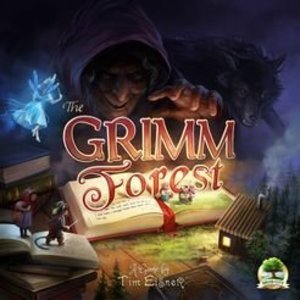
The Grimm Forest
Tabletop Game
Who will benefit most from the cunning of Robin Hood, the beauty of Snow White, the bountiful gifts...
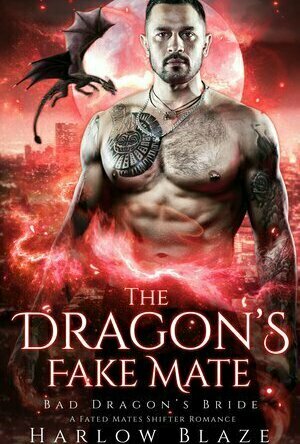
The Dragon’s Fake Mate (Bad Dragon's Bride, #4)
Book
Marrying her brutal dragon-shifter nemesis is the only way to save her friend. Starla ...
Paranormal Romance Dragons
This book held me in its spell from start to finish. Is that a bit too corny, considering it’s about witches? Actually, I don’t care, because it’s true!
It’s spellbinding, in fact.
Three generations of witches tell the stories of how they came into their power despite the interference of society and men (mainly men though 🤷🏼♀️).
In 1619, Altha Weyward is on trial for witchcraft, and whilst she’s in the towns prison she reminisces over her mother, her life before, everything she has learnt and the circumstances that led up to her incarceration. Altha had the knowledge needed to help people, but that same knowledge put her in danger from the church and general ignorance (and we can’t have women knowing more than men, can we!)
In 1942, Violet Ayres lives a very restricted life, tucked away from the rest of the world in her family home. She has only two clues about her heritage: her dead mothers locket with a “W” inscribed and the word “Weyward” scratched into the skirting board under her bed.
2019, Kate Ayres escapes a violent relationship in London and flees to Weyward cottage - the house her Aunt Violet had left her in her will. It’s a wild, unkempt, rundown house and garden, but it’s what Kate needs. She finds Altha’s diaries, some writings from Violet, and begins to learn about her true inheritance.
I just loved this book so much. Women taking control of their lives away from the men who would control them. Nature and magic is woven throughout, and nothing feels far-fetched or unbelievable.
I loved the alternating chapters between the three women, and this was probably the main reason why I couldn’t put it down. I needed to know what was going to happen to each of them next.
What more can I say? This WILL be high up in my favourite books this year. And to have read it in February!! How lucky am I!
I can’t wait to see what Emilia Hart writes next.
Many thanks to NetGalley and Harper Collins UK for my ebook copy of this book to read and review. Of course these are my own opinions!
It’s spellbinding, in fact.
Three generations of witches tell the stories of how they came into their power despite the interference of society and men (mainly men though 🤷🏼♀️).
In 1619, Altha Weyward is on trial for witchcraft, and whilst she’s in the towns prison she reminisces over her mother, her life before, everything she has learnt and the circumstances that led up to her incarceration. Altha had the knowledge needed to help people, but that same knowledge put her in danger from the church and general ignorance (and we can’t have women knowing more than men, can we!)
In 1942, Violet Ayres lives a very restricted life, tucked away from the rest of the world in her family home. She has only two clues about her heritage: her dead mothers locket with a “W” inscribed and the word “Weyward” scratched into the skirting board under her bed.
2019, Kate Ayres escapes a violent relationship in London and flees to Weyward cottage - the house her Aunt Violet had left her in her will. It’s a wild, unkempt, rundown house and garden, but it’s what Kate needs. She finds Altha’s diaries, some writings from Violet, and begins to learn about her true inheritance.
I just loved this book so much. Women taking control of their lives away from the men who would control them. Nature and magic is woven throughout, and nothing feels far-fetched or unbelievable.
I loved the alternating chapters between the three women, and this was probably the main reason why I couldn’t put it down. I needed to know what was going to happen to each of them next.
What more can I say? This WILL be high up in my favourite books this year. And to have read it in February!! How lucky am I!
I can’t wait to see what Emilia Hart writes next.
Many thanks to NetGalley and Harper Collins UK for my ebook copy of this book to read and review. Of course these are my own opinions!
Becs (244 KP) rated The Crucible in Books
Oct 2, 2019
I absolutely love Arthur Miller and anything regarding witches/ the Salem Trials. So, the crucible for me is a five-star novel. Can we just take a moment to admire the writers of the 50’s and older as they don’t seem to be getting much hype lately? Like, literary classics are deemed school reads and not your typical everyday read. THIS NEEDS TO CHANGE.
Reading these in school and then giving them a reread five years after graduating, has shown a new light onto these novels. And has made me appreciate them more as a whole compared to when I read them in high school. If you haven’t read many literary classics, I recommend starting with something by Arthur Miller or George Orwell. Yes, they may be a bit hard to get into at first, but give it time. That’s the key when reading any book!
The Crucible by Arthur Miller
Genre: Literary Classic, Historical Fiction, Plays, Drama
Synopsis: “I believe that the reader will discover here the essential nature of one of the strangest and most awful chapters in human history,” Arthur Miller wrote of his classic play about the witch-hunts and trials in seventeenth-century Salem, Massachusetts. Based on historical people and real events, Miller’s drama is a searing portrait of a community engulfed by hysteria. In the rigid theocracy of Salem, rumors that women are practicing witchcraft galvanize the town’s most basic fears and suspicions; and when a young girl accuses Elizabeth Proctor of being a witch, self-righteous church leaders and townspeople insist that Elizabeth be brought to trial. The ruthlessness of the prosecutors and the eagerness of neighbor to testify against neighbor brilliantly illuminate the destructive power of socially sanctioned violence.
Written in 1953, The Crucible is a mirror Miller uses to reflect the anti-communist hysteria inspired by Senator Joseph McCarthy’s “witch-hunts” in the United States. Within the text itself, Miller contemplates the parallels, writing, “Political opposition… is given an inhumane overlay, which then justifies the abrogation of all normally applied customs of civilized behavior. A political policy is equated with moral right, and opposition to it with diabolical malevolence.”
WIth an introduction by Christopher Bigsby.
Audience/ Reading Level: High School +
Interests: Plays, Drama, Witches, the Salem Trials, Arthur Miller, Literary Classics.
Point of View: Third Person Omniscient
Difficulty Reading: With every literary classic, you run into the problem of the first 30% of the novel being a bore or hard to get into. The Crucible was only a bore in parts but taking the novel as a whole, it was a pretty easy read.
Promise: “I believe that the reader will discover here the essential nature of one of the strangest and most awful chapters in human history.”
Insights: The Crucible is based on true events and Arthur Miller has a way of explaining everything that was wrong with the way people lived. I.E. Woman did not have rights until the early 1920’s. This didn’t stop some countries/states to still not allow the woman to have rights. But taking The Crucible into perspective, the women that were charged with witchcraft were unable to explain themselves to the men. The men believed the accusers either because they were sleeping with them or because they were their family. Luckily, nowadays we don’t have this extreme of situations but it still does exist. The Crucible teaches all of its readers, young or old, many valuable lessons that are sometimes hard to witness. Plus, Miller correlates the events in the Crucible to the anti-communist McCarthyism of the 1950s.
Favorite Quotes: “I speak my own sins; I cannot judge another. I have no tongue for it.”
“Because it is my name! Because I cannot have another in my life! Because I lie and sign myself to lies! Because I am not worth the dust on the feet of them that hang! How may I live without my name? I have given you my soul; leave me my name!”
“You are pulling down heaven and raising up a whore”
What will you gain: A love for another literary classic and a love for Arthur Miller if you do not already love his writing. Plus, a great historical read.
Aesthetics: The witches, the trials, the way people take sides, I mean I can’t say much more without giving spoilers away. We wouldn’t want that, now would we?
“It is rare for people to be asked the question which puts them squarely in front of themselves”
Reading these in school and then giving them a reread five years after graduating, has shown a new light onto these novels. And has made me appreciate them more as a whole compared to when I read them in high school. If you haven’t read many literary classics, I recommend starting with something by Arthur Miller or George Orwell. Yes, they may be a bit hard to get into at first, but give it time. That’s the key when reading any book!
The Crucible by Arthur Miller
Genre: Literary Classic, Historical Fiction, Plays, Drama
Synopsis: “I believe that the reader will discover here the essential nature of one of the strangest and most awful chapters in human history,” Arthur Miller wrote of his classic play about the witch-hunts and trials in seventeenth-century Salem, Massachusetts. Based on historical people and real events, Miller’s drama is a searing portrait of a community engulfed by hysteria. In the rigid theocracy of Salem, rumors that women are practicing witchcraft galvanize the town’s most basic fears and suspicions; and when a young girl accuses Elizabeth Proctor of being a witch, self-righteous church leaders and townspeople insist that Elizabeth be brought to trial. The ruthlessness of the prosecutors and the eagerness of neighbor to testify against neighbor brilliantly illuminate the destructive power of socially sanctioned violence.
Written in 1953, The Crucible is a mirror Miller uses to reflect the anti-communist hysteria inspired by Senator Joseph McCarthy’s “witch-hunts” in the United States. Within the text itself, Miller contemplates the parallels, writing, “Political opposition… is given an inhumane overlay, which then justifies the abrogation of all normally applied customs of civilized behavior. A political policy is equated with moral right, and opposition to it with diabolical malevolence.”
WIth an introduction by Christopher Bigsby.
Audience/ Reading Level: High School +
Interests: Plays, Drama, Witches, the Salem Trials, Arthur Miller, Literary Classics.
Point of View: Third Person Omniscient
Difficulty Reading: With every literary classic, you run into the problem of the first 30% of the novel being a bore or hard to get into. The Crucible was only a bore in parts but taking the novel as a whole, it was a pretty easy read.
Promise: “I believe that the reader will discover here the essential nature of one of the strangest and most awful chapters in human history.”
Insights: The Crucible is based on true events and Arthur Miller has a way of explaining everything that was wrong with the way people lived. I.E. Woman did not have rights until the early 1920’s. This didn’t stop some countries/states to still not allow the woman to have rights. But taking The Crucible into perspective, the women that were charged with witchcraft were unable to explain themselves to the men. The men believed the accusers either because they were sleeping with them or because they were their family. Luckily, nowadays we don’t have this extreme of situations but it still does exist. The Crucible teaches all of its readers, young or old, many valuable lessons that are sometimes hard to witness. Plus, Miller correlates the events in the Crucible to the anti-communist McCarthyism of the 1950s.
Favorite Quotes: “I speak my own sins; I cannot judge another. I have no tongue for it.”
“Because it is my name! Because I cannot have another in my life! Because I lie and sign myself to lies! Because I am not worth the dust on the feet of them that hang! How may I live without my name? I have given you my soul; leave me my name!”
“You are pulling down heaven and raising up a whore”
What will you gain: A love for another literary classic and a love for Arthur Miller if you do not already love his writing. Plus, a great historical read.
Aesthetics: The witches, the trials, the way people take sides, I mean I can’t say much more without giving spoilers away. We wouldn’t want that, now would we?
“It is rare for people to be asked the question which puts them squarely in front of themselves”
Neon's Nerd Nexus (360 KP) rated Gretel & Hansel (2020) in Movies
Sep 10, 2020
Something Wicked
Gretel and hansel is everything I hoped it would be & more, a devilsh dive into witchcraft & an utterly nightmarish visual feast for both the eyes & senses. Gretel & Hansel is a new take on the well known Grimm fairytale & for a simple comparison it's much like one of my favourite horror films of all time 2015's The witch. Now I'm guessing that's put some people off already but those who are still with me are in for a delightful treat. Think Suspira if it were boiled in a pot with the witch, hagazussa & it comes at night & you have painted a picture of what to expect here. Extremely slow pacing, constantly lingering ominous dread & a soundtrack that's likely to cause the hairs on your neck to stand up every time it drones. To say this film is absolutely gorgeous is an insult, every single frame is awash with beautifully striking & highly interesting to explore imagery & colour. It's so visually striking & breathtaking I could happily of sat & watched it with no sound & still be as entranced by its wicked ways. However the way these visuals mash with the synth & droning soundtrack honestly kept me glued to the screen seemingly bewitched & fixated in a trance like state. As you can tell these types of films are my passion when it comes to horror, I much prefer the slow lingering constant sense of dread & creepy imagery that lead up to a shocking pay off while also intertwining the kind of depth & philosophy you have to unravel yourself instead of being spoon fed the plot by the characters themselves. This film is no different & as we delve deep into such themes as female empowerment, innocence, sacrifice, responsibility, naivety, addiction & greed as a viewer the web spun for you begins to unravel about what the film is truly trying to say at its core. Sophia Lillis who you may know from IT does wonders here as Gretel & it's her character, acting & attachment that really hooks you & makes every scene with her in feel calming amongst all the oddities going on. I honestly can not praise this film enough & say if your into art house cinema do not hesitate at grabbing this on glorious 4k. A stunning, breathless wonder of a movie to that will leave you feeling body unnerved & your mind shaken.
Lyndsey Gollogly (2893 KP) rated Forsaken (Shadow Cove Saga #1) in Books
Sep 22, 2019
Book One of the Shadow Cove Saga
Inspired by Actual Events
Excerpt from the Journal of Clayton Stone - 1692
She was examined today without torture at Shadow Cove township on the charge of witchcraft. She said she was wholly innocent of the crime and has never in life renounced God. I watched as they brought her out. A poor, sickly thing, worn by her time behind the walls of her prison. Her bared feet and hands bound in leather, her clothing tattered to that of ruin. Despite such condition, her head was held high, her eyes meeting those of her accusers. Upon being stripped and examined, on her right side is found a bluish mark, much like a clover leaf; it was thrice pricked therein but she felt no pain and no blood flowed from the wound. She still refuses to provide her name so we remain unable to search baptismal records, nor has her family stepped forward to claim her as their own. We have no reason to believe she is anything but an orphaned child. I find myself unable to look at her directly in the moments preceding her trial. She is watching me though; with eyes of the deepest blue, she is watching me.
Thad McAlister, Rise of the Witch
When horror author Thad McAlister began his latest novel, a tale rooted in the witch trials of centuries past, the words flowed effortlessly. The story poured forth, filling page after page with the most frightening character ever to crawl from his imagination. It was his greatest work, one that would guarantee him a position among the legends of the craft.
But was it really fiction?
He inadvertently opened a door, one that would soon jeopardize the lives of his family.
She wants to come back.
At home, his wife struggles to keep their family alive. Secretly wondering if she caused it all...a deal she made long ago. A deal with the Forsaken.
<strong>Strange but gripping</strong>
Ok so it was so good. The right amount of spooky and scarlet that made you keep turning the pages. The little pixie creatures reminded me of something Del Toro has used in his films. Highly recommend.
Not much more to really say it's one of those books you just need to read!
Inspired by Actual Events
Excerpt from the Journal of Clayton Stone - 1692
She was examined today without torture at Shadow Cove township on the charge of witchcraft. She said she was wholly innocent of the crime and has never in life renounced God. I watched as they brought her out. A poor, sickly thing, worn by her time behind the walls of her prison. Her bared feet and hands bound in leather, her clothing tattered to that of ruin. Despite such condition, her head was held high, her eyes meeting those of her accusers. Upon being stripped and examined, on her right side is found a bluish mark, much like a clover leaf; it was thrice pricked therein but she felt no pain and no blood flowed from the wound. She still refuses to provide her name so we remain unable to search baptismal records, nor has her family stepped forward to claim her as their own. We have no reason to believe she is anything but an orphaned child. I find myself unable to look at her directly in the moments preceding her trial. She is watching me though; with eyes of the deepest blue, she is watching me.
Thad McAlister, Rise of the Witch
When horror author Thad McAlister began his latest novel, a tale rooted in the witch trials of centuries past, the words flowed effortlessly. The story poured forth, filling page after page with the most frightening character ever to crawl from his imagination. It was his greatest work, one that would guarantee him a position among the legends of the craft.
But was it really fiction?
He inadvertently opened a door, one that would soon jeopardize the lives of his family.
She wants to come back.
At home, his wife struggles to keep their family alive. Secretly wondering if she caused it all...a deal she made long ago. A deal with the Forsaken.
<strong>Strange but gripping</strong>
Ok so it was so good. The right amount of spooky and scarlet that made you keep turning the pages. The little pixie creatures reminded me of something Del Toro has used in his films. Highly recommend.
Not much more to really say it's one of those books you just need to read!

